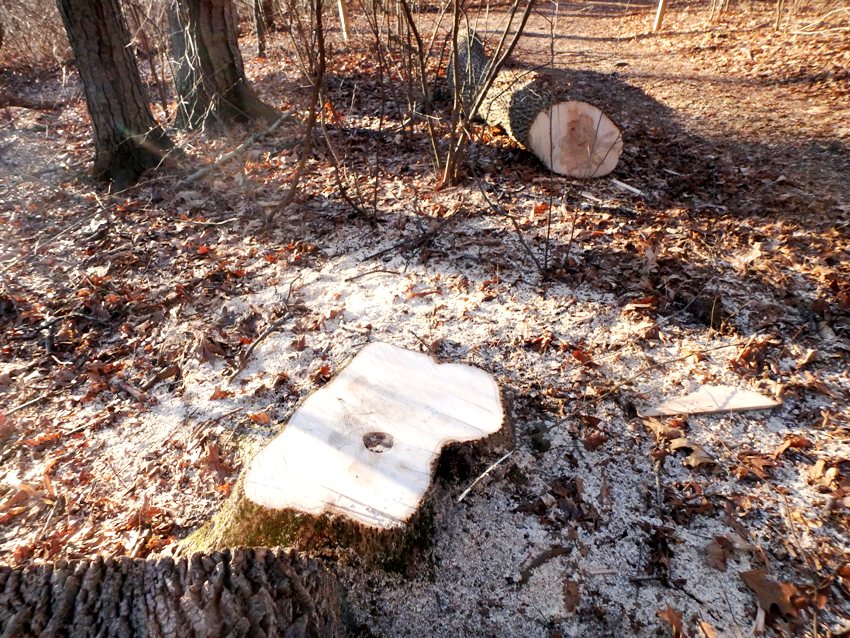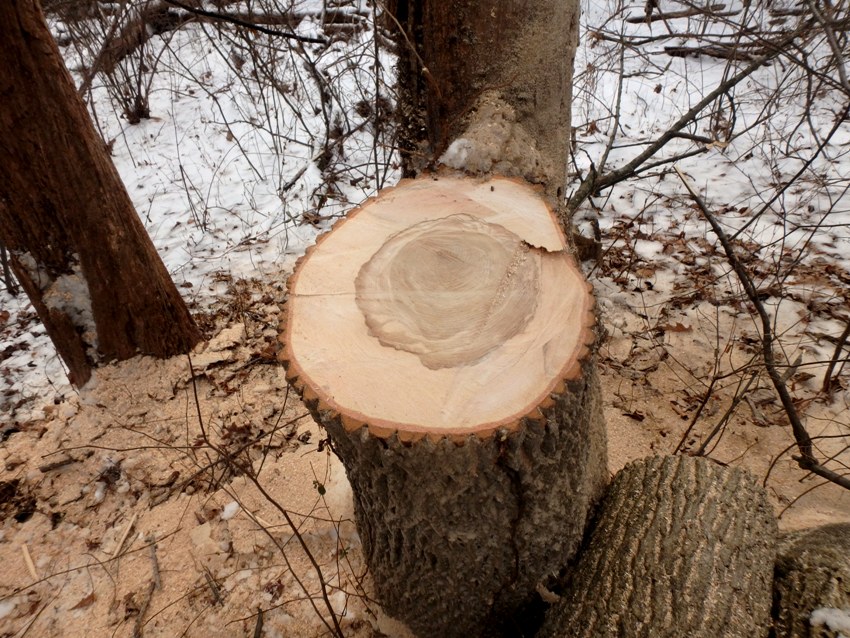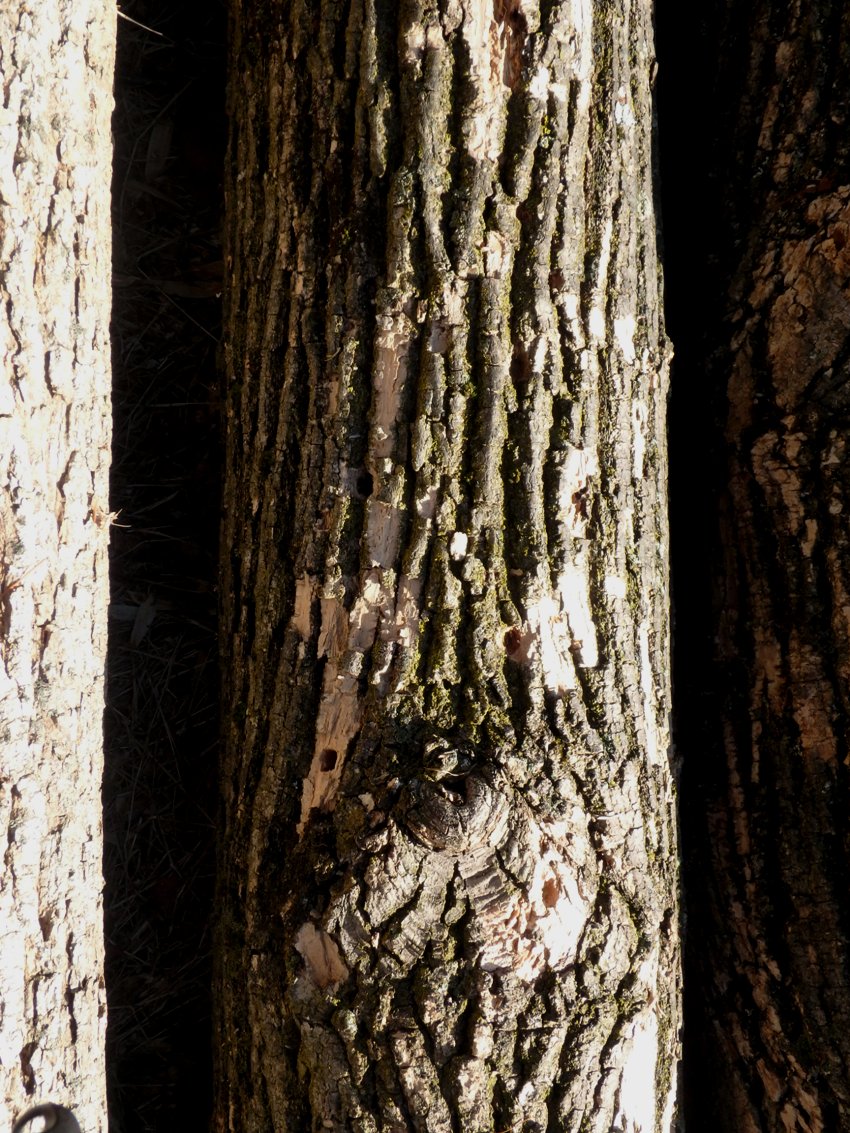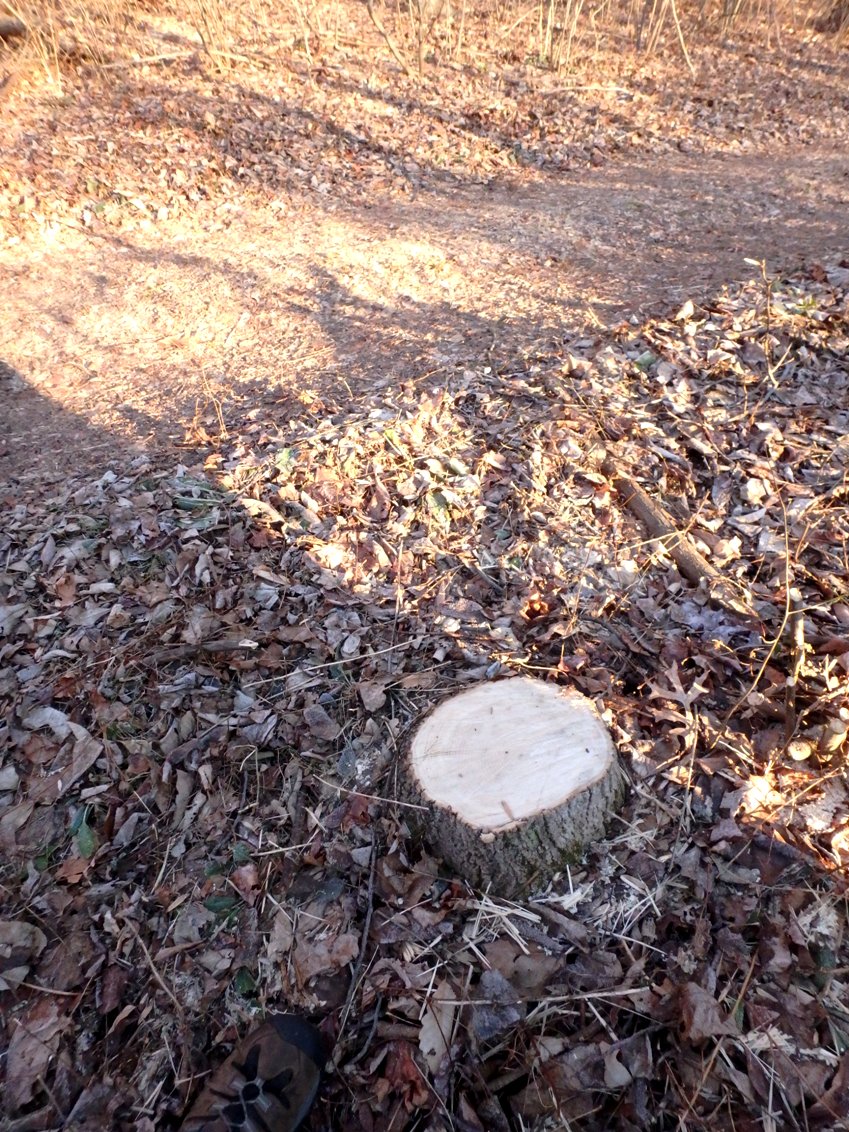Mariton: White Stumps
by Tim Burris, Preserve Manager

If you have visited Mariton lately you may have noticed bright white stumps along some of the trails. Right now they are really bright in comparison to the surrounding woodland. We have been removing White Ash (Fraxinus americana) trees at Mariton. Dan Barringer has written quite a bit about the ash tree removals at Crow’s Nest Preserve. Like Dan, I am removing them before they become hazards. Emerald Ash Borer is a non-native insect that was introduced into Michigan and has been killing ash trees as it spreads across the country. (How does it spread? The easiest transportation is people moving firewood from ash trees that harbor the borer.) When the ash borer reaches an area, it is usually 3 to 4 years before all the mature ash trees are dead and dropping branches.

Removing trees now is just being proactive. We don’t have the resources (labor or financial) to remove them all at once, so we are phasing the project over 4 years. This year, we are concentrating mostly on trees that are hanging over the trails. In future years, we’ll work on trees close enough to drop limbs on trails. It is a sad thing for me to cut down trees that are still healthy and providing oxygen. It may be unbridled optimism on my part, but we are cutting trees during the winter when most of the tree’s energy is stored in the roots. Some of the ash trees we cut will send up tree sprouts come spring. Emerald Ash Borers don’t attack young trees, so I am hoping that by the time these sprouts mature science or natural cycles will find protections for ash trees, and we will be able to reseed the forest with this species.

Telltale signs of Emerald Ash Borer
We are seeing Emerald Ash Borer on some of the trees that we are removing, so I know it is here and beginning to kill trees. Here is something you can look for on your ash trees. It is hard to see the entrance holes of the borer high up in the tree, but you can often see where woodpeckers start scaling down the bark as they look for the larva. It is the larva that kill the tree as they tunnel under the bark and disrupt the flow of nutrients and water within the tree.

Mariton is very fortunate that while we have a lot of white ash trees, it is not the dominate canopy tree in our forest. As ash trees start dying it will open up gaps in the forest similar to wind storms. The effects of this scourge will be quite stark at some Natural Lands’ preserves where ash is the dominate tree. As we learned at Mariton following Hurricane Sandy, you can have a lot of tree regeneration following natural disasters if you can control things like invasive plants and deer browsing, but it still unsettling to see all those trees missing from the forest.
